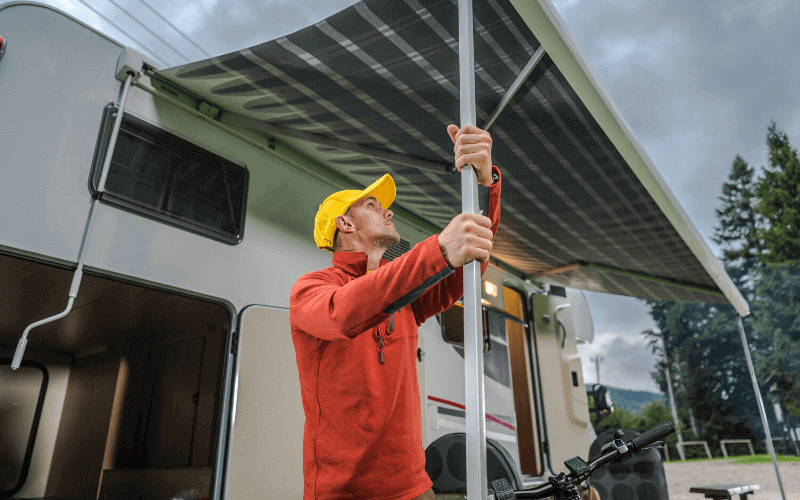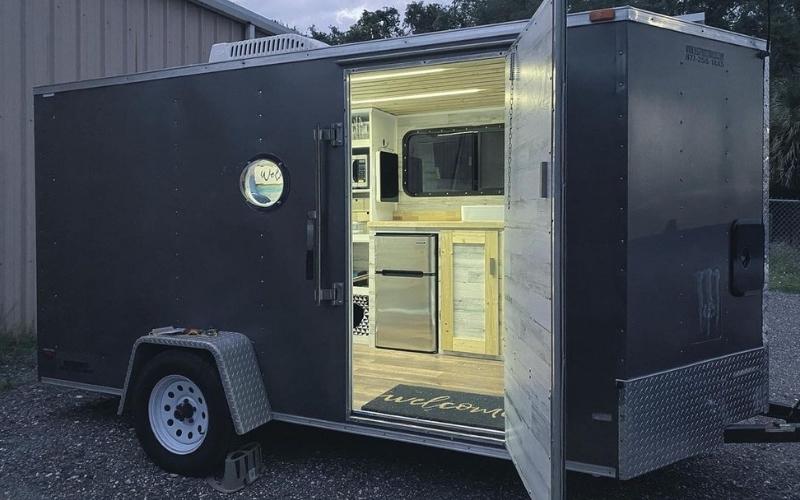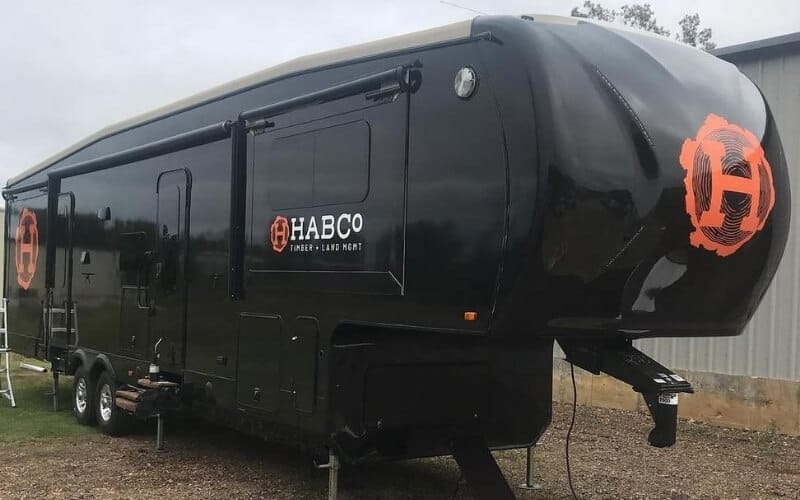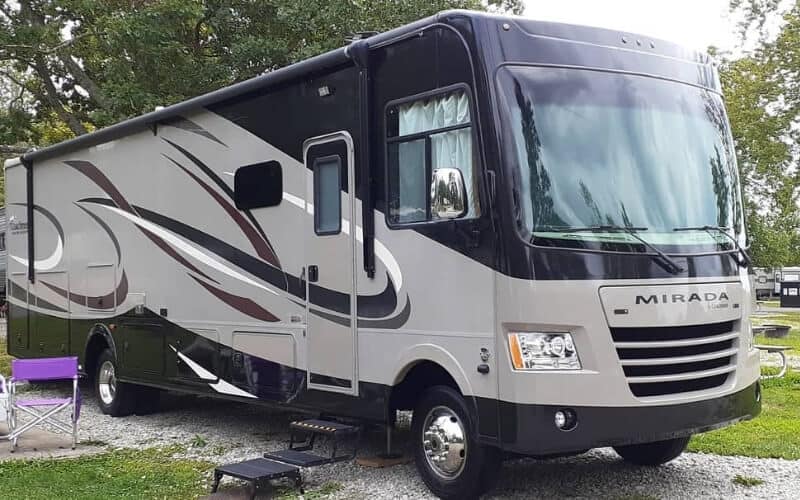Let’s face it, certain parts of our RVs last longer than others, and others will need replacing.
If you have an older RV or bought one used this may happen sooner rather than later.
Knowing what to fix is half the battle, but then you still have to figure out if it is worth the investment.
One of the most common replacements for RV owners is their awning. But replacing your RV awning can be hard to justify, especially if you aren’t sure how much it will cost.
How much does an RV awning cost to replace?
The overall cost of an RV awning will depend on the type of awning and if you’re doing the replacement yourself. You can expect the price to range from $200-4000 in the end. The more complex the awning is, the most expensive it will be. If you go to a dealer to pay for the replacement, it will be more expensive to cover the cost of labor as well.
If you are going to spend upwards of $2000 for a replacement awning, it is best to figure out if it is a necessary replacement.
Ask yourself if there are things you can do to repair the awning yourself. Perhaps there are other things wrong with the RV, and it is time for an upgrade.
This article can also help RV owners that want to add an awning to their RV setup.
Not all trailers come equipped with an awning, so knowing the type of awning to get an average cost is a great first step in your shopping journey.
All of these questions and more are what we are going to dig into in this article.
How Much Does an RV Awning Replacement Cost?
Numerous factors will contribute to the cost of an RV awning. First, you must consider if you need an awning at all.
In most cases, awnings are an invaluable piece of equipment for your RV.
They provide you with an outdoor living space that is protected from elements like rain or the sun.
Most RVers will agree that having an extended outdoor living space makes their camping and travel experience more enjoyable.
So, if you’re set on having an awning, then you should take time to assess if the entire mechanism needs to be replaced, or if just sections of it can be fixed.
There are a lot of moving parts on RV awnings, so if only the fabric is torn or one of the arms isn’t retracting correctly, you may be able to fix just that section.
If the awning issues keep mounting and it isn’t worth the hassle anymore, then start looking into replacement options.
Once you’re set on a replacement, you’ll need to know how much it will cost.
The type of awning, the material used, and installation will all factor into the overall cost.
Keep in mind that mechanized awnings will almost always be more expensive due to their additional features and ease of set up.
To make things easier, we broke down some of the most common cost averages below.
You may notice that not all awning styles come in the same sizes.
Cost of Replacing Awning 4 Types Of RV Awning
Awning Type | Awning Size | Average Estimated Cost |
Manual Slide Out | Small = 2’ x 3’ | $500 |
Medium = 4’ x 8’ | $1000 | |
Large = 6’ x 15’ | $1500 | |
Fixed Awning | Small | $250 |
Medium | $500 | |
Patio Style | Medium | $1500 |
Large | $2500 | |
Mechanized/Motorized Awning | Small | $1500 |
Medium | $2000 | |
Large | $3500 |
The costs above are averages and will vary from place to place. These price listings are in USD.
The biggest take away from this chart should be that the more moving parts that the awning has, the more expensive it is.
Notice that the fixed awning is at the bottom of the price range and that motorized awnings are at the top. The size of the awning will also play largely into the estimated cost.
So, after the price of the awning itself, you then have to consider the installation process.
Some RV owners are proud DIYers, while others will depend on dealerships to install and replace things like an awning.
This will run you an additional cost to pay for the labor involved inthe replacement.
How the installment cost is broken down will be dependent on the dealership that you use.
However, the average cost of labor is usually between $60-100 per hour.
They will also likely charge you an overarching installation fee on top of the labor cost.
The installation fee will be higher according to the size and type of awning. For the installation fee alone, expect to pay anywhere from $180-1350.
Does my Warranty cover my RV Awning?
How customer-oriented the manufacturer of your RV is will determine your RV’s warranty.
If you’ve invested in an RV Extended Service Contract you will be covered for a longer period of time.
Either way, only certain things will be covered. For instance, if your RV awning breaks because of a manufacturing defect, then it will be covered by the original warranty, if it hasn’t expired.
However, if your RV awning wears down or breaks because of general use, then it is usually not covered at all.
An RV warranty should essentially cover damages that should not have happened. They will not cover damage due to an accident or use.
Will My Insurance Cover an Awning Replacement?
Like with an RV warranty, if your insurance will cover your awning replacement will depend on your insurance provider.
In most cases, RV insurance works like car insurance, where you are covered when accidents or damages out of your control occur.
So, you can always ask your insurance company if they will cover the cost of a replacement, but it will usually depend on how the awning was broken in the first place.
Proper Awning Upkeep
To avoid having to replace your RV awning early on in the life of your RV, you need to take care of it properly.
Some things are out of your control, like storms or accidents, but other things come down to normal wear and tear.
Here are some of the best ways to increase the longevity of your RV awning:
-
Read the operating and owners manual to be sure you are using it properly
-
Clean it regularly and use cleaning solutions that won’t harm the materials. You want to keep it mildew free!
-
Inspect it during routine maintenance checks
-
If it gets wet, let it dry completely before putting it away
-
Stow it away when not in use
-
Keep tabs on the weather, so you know when it will be windy or a storm is on the way. If there is bad weather in the forecast, put the awning away before the wind picks up.
-
Don’t let materials like snow or leaves build up on top of the awning.
-
Fix minor damages right away so they don’t become bigger issues later down the road.
The most important thing you can do is to get into a routine or habit of inspecting your awning.
The simple act of inspecting the awning regularly will lead to frequent cleaning and early insight into issues that come up.
Awning Style Types
The style of the awning you have currently may not be the same you want to replace it with right now.
There are a few different style choices, but not all RVs are compatible with all the styles.
Most of the styles do come in various sizes, so you should be able to find the right size for your RV.
We mentioned the types of awnings in the price breakdown table, but we will explain them in more detail here.
The most common RV awning styles include:
Best Materials for RV Awnings
When you’re choosing an awning, you may also have the choice between different fabric types.
There aren’t many options, and some are better than others in regards to functionality and durability.
Here are the three most common materials used for RV awnings:
When you’re buying a new RV or a new awning, it will most likely be an acrylic or vinyl awning material.
When you are shopping for a new awning, be sure not to skip over the type of material used by the manufacturer.
You want to ensure you are getting the kind of awning that you want, depending on your needs.
Other FAQ about RV Awnings
Beyond the prices, types, and materials used, there are a lot of other commonly asked RV awning questions. The two most frequently asked questions are about cleaning awnings.
How Often Should You Clean Your RV Awning?
The frequency of which you clean your awning will depend on how often you use your RV.
At a minimum, it is recommended that you clean your awning at least once a year.
This is best done before you store your RV for the winter.
Most fulltime RVers choose to clean their RV awnings every couple of months or if the awning appears dirty at all.
You may also want to clean it more often if you were parked underneath an area with a lot of birds or if you were under a tree.
If you rolled your awning up wet after a storm, you might also have to clean it due to mold or mildew build-up.
Can I Power Wash My RV Awning?
In most cases, this is not recommended. It may be necessary, depending on if the awning has ever been cleaned or not.
If you have a vinyl awning, it is exceptionally easy to damage the awning material with a high-pressure power washer.
If you choose to do so, use caution and be a considerable distance away. Stop and check the material often to be sure you aren’t doing more harm than good.
What are your other RV awning questions?







4 Comments
Joanne
3 years agoI have a 1999 Trail Lite Bantam, and am considering changing out the manual awning for an electric one, mainly for convenience as it is hard for me to get it set up by myself. I am wondering if making a change like that would increase the resell value when the time comes. The basic unit is in very good condition currently and I will keep it that way, and use it for several years, usually 3-4 times a year for a long weekend. That change is expensive though, so makes me wonder.
Jan
2 years agoCan just the awning itself be replaced if the motorized part works fine ? I have a tear where it attaches to the top roller
Aaron Richardson
2 years agoWhy not. Fabric roller is Same, one just is electric and other one is manual. Regardless, you have to check which size of awning fits on your RV. For gather knowledge check this article about Best RV Awning. For Purchase Check Amazon Or Campingworld
Nadine Jackson
11 months agoReplace basement awing